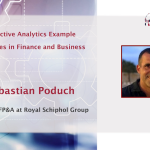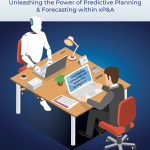The San Francisco FP&A Board met on Thursday, March 20 to delve into Predictive Planning and Forecasting. The thought-provoking and engaging session comprised over 35 senior FP&A practitioners from diverse backgrounds and various-sized firms across the Bay Area.
The meeting was sponsored by SAP in partnership with DeWinter Group and International Workplace Group.
Larysa Melnychuk, CEO and Founder of the FP&A Trends Group, kicked off the meeting by welcoming the attendees and encouraging the group to share their experiences and best practices freely to help each other become better FP&A professionals. She also provided a brief outline of the evening's agenda:
- Evolution and Balance: From Traditional Planning to Predictive Forecasting (PPF)
- Key Elements of the PPF Solution Framework
- Roadmap to Implementation
- Navigating the PPF Maturity Model
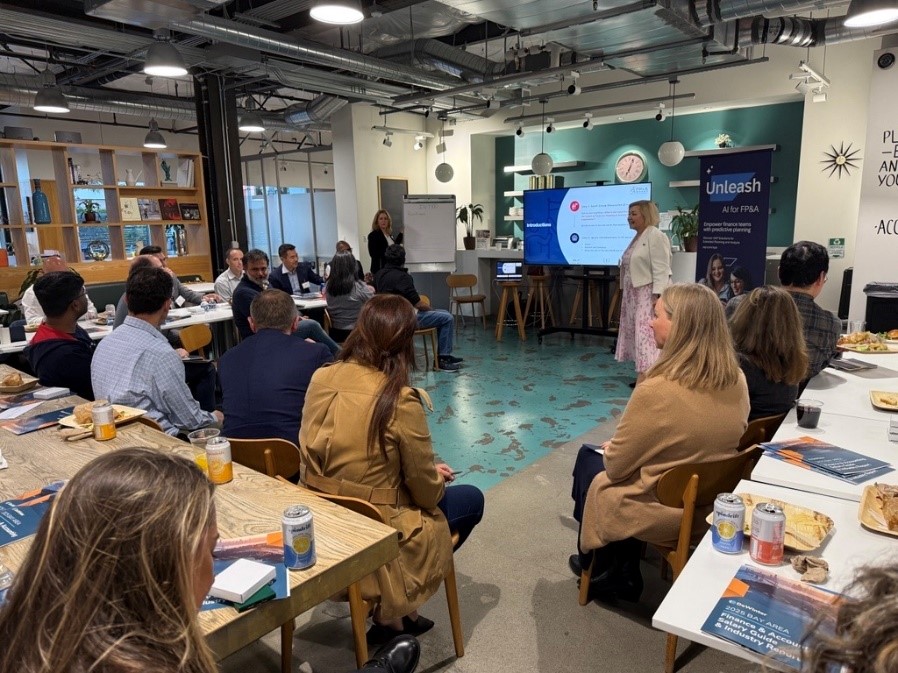
Figure 1. San Francisco FP&A Board №11, March 2025
We started with the question: "What is one word that best describes the impact of Predictive Planning & Forecasting in your organization?"
The responses ranged:
- Agility
- Fast
- Efficient
- Insights
- Complicated
- Impactful
- Data-driven
What Are the Differences Between the Traditional Model and PPF?
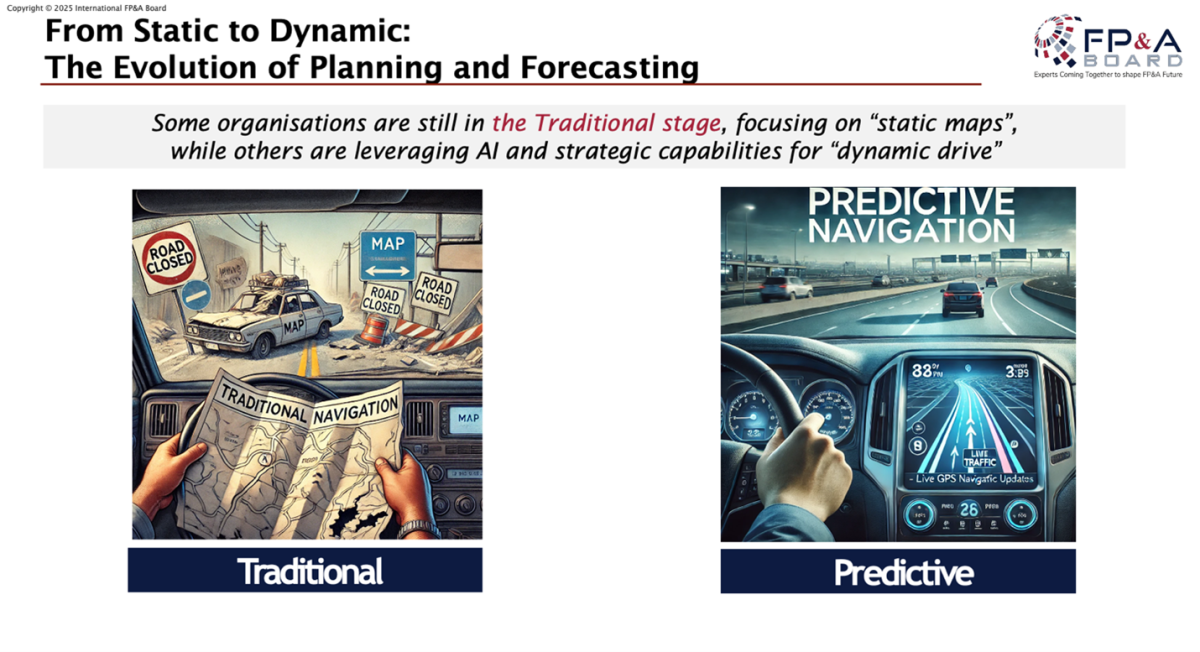
Figure 2
There was also a robust discussion on where people were on the scale between traditional and PPF. The group talked about data and the importance of clean, accurate, and relevant data to achieve PPF. This led to an interesting conversation around data quality and not letting trying to get the data perfect prevent progress towards PPF and driver-based.

Figure 3
The image above illustrates some main differences between traditional planning and our target approach. Integrating driver-based data with dynamic models will enable faster and more flexible scenario outputs.
One of the main discussion topics was technology, specifically AI / ML, which is especially relevant in Silicon Valley.

Figure 4
A representative from SAP demonstrated to the group one of SAP's offerings that utilizes AI/ML to create dynamic models in real-time based on various drivers. This was also one of the topics for group breakout discussions that followed.
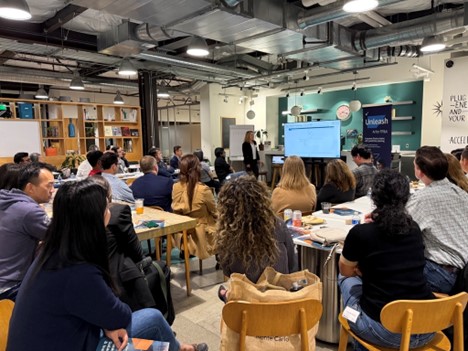
Figure 5. San Francisco FP&A Board №11, March 2025
The group discussed the positions of their organizations within the PPF Maturity Model. There was a variation in maturity across the 6 dimensions and 5 stages outlined above, and they exchanged knowledge about the requirements for reaching the "Leading State" in all areas.

Figure 6
Group Work Insights
Dynamic Driver-Based Model Development Group
This subgroup outlined essential steps for creating a dynamic driver-based model, beginning with data organization and the identification of key drivers. The next steps include identifying key stakeholders, getting consensus on the data and key drivers, change management, and measuring whether the change was successful.
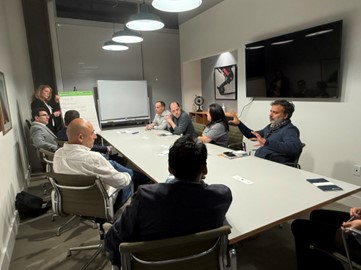
Figure 7. San Francisco FP&A Board №11, March 2025
Process Improvement Group
With a driver-based model, the next step is identifying process improvements to enhance forecasting agility and responsiveness. This subgroup's discussions centred on understanding the current process and the time required for forecasting to determine areas for improvement. Additionally, identifying necessary inputs, actions taken on those inputs, and accountability for the results were highlighted as essential components.
Technology & Analytics Group
Advanced predictive planning requires data integration, validation, scenario planning, security, governance, and a simple, intuitive interface. The group also emphasized the importance of consensus and buy-in on the data foundation and source systems for success.
Conclusion
The meeting provided an excellent platform for senior FP&A professionals to exchange and learn best practices in Predictive Analytics and modelling within FP&A. The integration of AI enhances our capacity for real-time scenario modelling and forward-looking forecasting and planning. The discussions and insights were intellectually enriching and highly beneficial.




